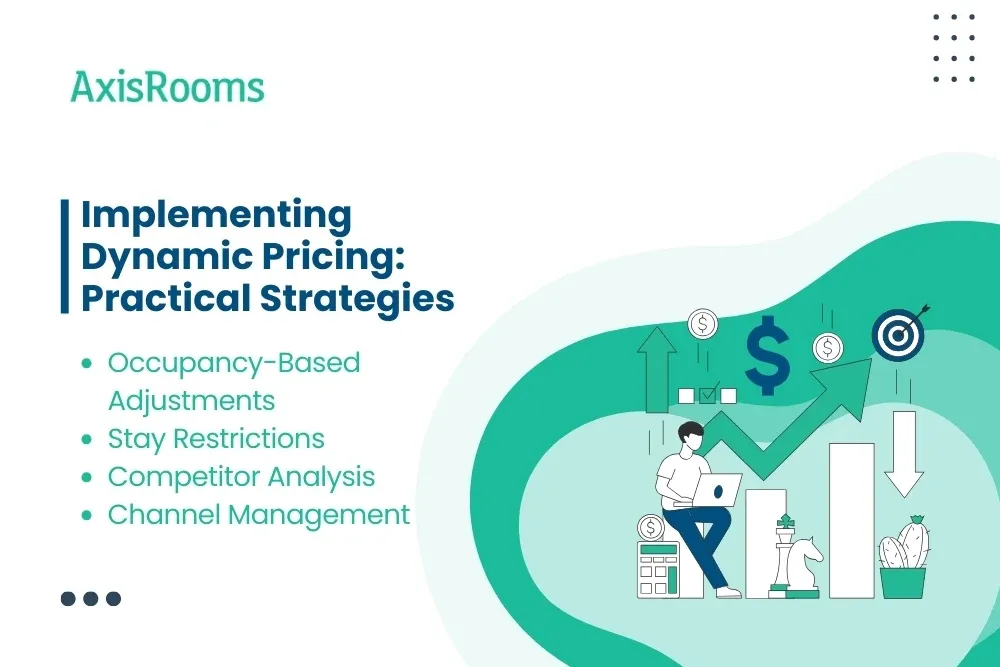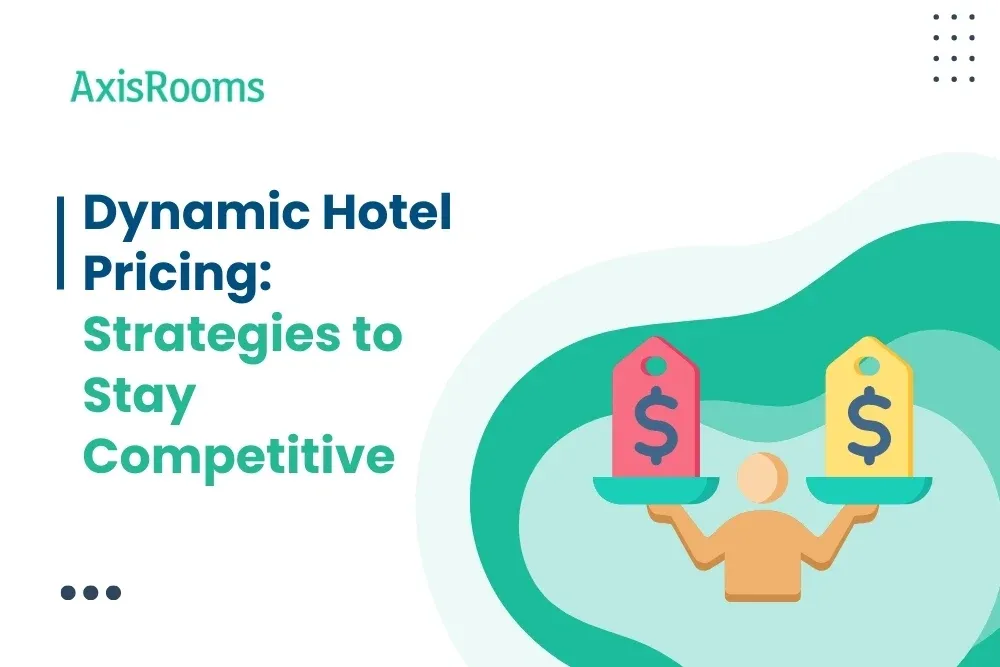For any hotelier, there’s that sinking feeling: empty rooms at the end of the day. But what if you could turn those last-minute vacancies into an opportunity? Let’s break down why dynamic pricing is a game-changer and how it can help your hotel stay ahead in 2025.
The Power of Dynamic Pricing in 2025
Dynamic pricing isn’t just a trend; it’s the backbone of modern revenue management. In 2025, with 30% of hotel bookings happening last-minute, it’s quite evident that the travel audience is going for a killer deal. So, how can you leverage this to your advantage?
1. AI-Driven Pricing Strategies
In 2025, Artificial Intelligence (AI) and Machine Learning (ML) are revolutionizing dynamic pricing. These technologies analyze vast amounts of data in real-time, allowing for:
- Precise demand forecasting
- Instant price adjustments based on market conditions
- Personalized pricing for different customer segments
Don’t waste empty rooms! Implement AI-driven pricing to maximize your revenue potential.
2. Total Revenue Optimization
Gone are the days when room rates were the only focus. In 2025, successful hotels are looking at:
- Ancillary services (spa, dining, experiences)
- Package deals
- Length-of-stay optimization
By considering all revenue streams, you can create a pricing strategy that boosts your bottom line across the board.
3. Hyper-Personalization
Today’s guests expect a tailored experience, and that includes pricing. Use data to:
- Offer personalized packages based on guest preferences
- Implement loyalty-based pricing
- Create targeted promotions for specific customer segments
Remember, a one-size-fits-all approach no longer cuts it in 2025!
Implementing Dynamic Pricing: Practical Strategies

Now, let’s get practical. One last-minute deal goes beyond mere price cutting; it’s a strategy. Here’s how to make it work:
Occupancy-Based Adjustments
- Increase rates by 10% when occupancy hits 50%
- Lower prices strategically to avoid empty rooms
Stay Restrictions
- Implement minimum length-of-stay requirements during peak periods
- Offer discounts for extended stays to smooth out demand
Competitor Analysis
- Monitor your hotel compset (5+ similar properties)
- Position your rates competitively (e.g., 10% below the highest-priced competitor)
Channel Management
- Optimize pricing across different distribution channels
- Use a robust channel manager to maintain rate parity
AxisRooms: Your Dynamic Pricing Powerhouse
AxisRooms’ Revenue Management System (RMS) is a game-changer for hoteliers looking to stay ahead in the dynamic pricing game.
Here’s why:
- AI-Powered Insights: AxisRooms’ RMS uses cutting-edge AI algorithms to analyze market trends, competitor rates, and historical data, giving you the edge in pricing decisions.
- Real-Time Rate Adjustments: With AxisRooms, you can set up automatic rate adjustments based on occupancy levels, ensuring you’re always maximizing revenue.
- Seamless Channel Management: AxisRooms’ integrated channel manager allows you to update rates across all your distribution channels with just a few clicks, maintaining perfect rate parity.
- Customizable Pricing Rules: Create and implement complex pricing strategies tailored to your property’s unique needs and market position.
Don’t just react to the market - stay ahead of it with AxisRooms. It’s not just about filling rooms; it’s about filling them at the right price, at the right time.
Overcoming Challenges in 2025
Dynamic pricing isn’t without its hurdles. Here’s how to navigate them:
- Customer Confusion: Educate guests on the benefits of flexible pricing
- Technology Integration: Invest in seamless systems that work together
- Ethical Considerations: Balance profit maximization with fair pricing practices
The Future is Dynamic
In 2025, static rates are a relic of the past. To thrive in this dynamic market:
- Embrace AI and ML technologies
- Focus on total revenue optimization
- Personalize your pricing strategies
- Stay agile and responsive to market changes
Remember, in the world of hotel pricing, standing still means falling behind. Are you ready to revolutionize your revenue management strategy?
Get practical. Implement these dynamic pricing strategies with tools like AxisRooms, and watch your revenue soar in 2025 and beyond!


